
Exploring the Tranquil Beauty of Serra do Montemuro
Discover the serene landscapes, rich cultural heritage, and delicious cuisine of Serra do Montemuro, Portugal's hidden gem in the heart of nature.
Nestled in the heart of Portugal, Serra do Montemuro is a haven for nature lovers and adventure seekers alike. This serene mountain range offers breathtaking landscapes, lush greenery, and a peaceful atmosphere. The rolling hills and expansive valleys create a picturesque setting, perfect for hiking, bird watching, and photography. One of the highlights of visiting Serra do Montemuro is the opportunity to experience traditional Portuguese villages. These quaint settlements, with their stone houses and cobbled streets, provide a glimpse into the country's rich cultural heritage. Local artisans and craftsmen can often be seen at work, offering visitors a chance to purchase unique, handmade souvenirs. For those interested in history, Serra do Montemuro does not disappoint. The region is dotted with ancient ruins and historical landmarks, including churches and castles that date back centuries. Exploring these sites offers a fascinating insight into the area's past and its significance in Portuguese history. The local cuisine is another compelling reason to visit Serra do Montemuro. Traditional dishes, made with fresh, locally sourced ingredients, are a treat for the taste buds. Be sure to try some of the regional specialties, such as roasted lamb, chorizo, and the famous Portuguese pastries. Whether you're looking to relax and unwind in a beautiful natural setting or immerse yourself in the local culture and history, Serra do Montemuro is a destination that promises a memorable experience.
Local tips in Serra do Montemuro
- Visit in spring or autumn for the best weather and fewer crowds.
- Wear comfortable hiking shoes to explore the rugged terrain.
- Bring a camera to capture the stunning landscapes and charming villages.
- Learn a few basic Portuguese phrases to enhance your interaction with locals.
- Try the local cheeses and wines, which are both delectable and unique to the region.
Exploring the Tranquil Beauty of Serra do Montemuro
Nestled in the heart of Portugal, Serra do Montemuro is a haven for nature lovers and adventure seekers alike. This serene mountain range offers breathtaking landscapes, lush greenery, and a peaceful atmosphere. The rolling hills and expansive valleys create a picturesque setting, perfect for hiking, bird watching, and photography. One of the highlights of visiting Serra do Montemuro is the opportunity to experience traditional Portuguese villages. These quaint settlements, with their stone houses and cobbled streets, provide a glimpse into the country's rich cultural heritage. Local artisans and craftsmen can often be seen at work, offering visitors a chance to purchase unique, handmade souvenirs. For those interested in history, Serra do Montemuro does not disappoint. The region is dotted with ancient ruins and historical landmarks, including churches and castles that date back centuries. Exploring these sites offers a fascinating insight into the area's past and its significance in Portuguese history. The local cuisine is another compelling reason to visit Serra do Montemuro. Traditional dishes, made with fresh, locally sourced ingredients, are a treat for the taste buds. Be sure to try some of the regional specialties, such as roasted lamb, chorizo, and the famous Portuguese pastries. Whether you're looking to relax and unwind in a beautiful natural setting or immerse yourself in the local culture and history, Serra do Montemuro is a destination that promises a memorable experience.
When is the best time to go to Serra do Montemuro?
Iconic landmarks you can’t miss
Montemuro
Discover the breathtaking beauty of Montemuro, Portugal's majestic mountain peak perfect for hiking, cycling, and immersing in nature's tranquility.

Fragas da Penavilheira
Explore the stunning natural beauty of Fragas da Penavilheira in Tendais, Portugal, where breathtaking landscapes and vibrant wildlife await your discovery.

Serra de Montemuro
Explore the stunning vistas and diverse wildlife of Serra de Montemuro, a must-visit natural attraction in Portugal for outdoor adventurers and nature lovers.

Unmissable attractions to see
Santuário de Nossa Senhora dos Remédios
Discover the Sanctuary of Nossa Senhora dos Remédios, a stunning baroque church in Lamego offering breathtaking views, rich history, and serene gardens.
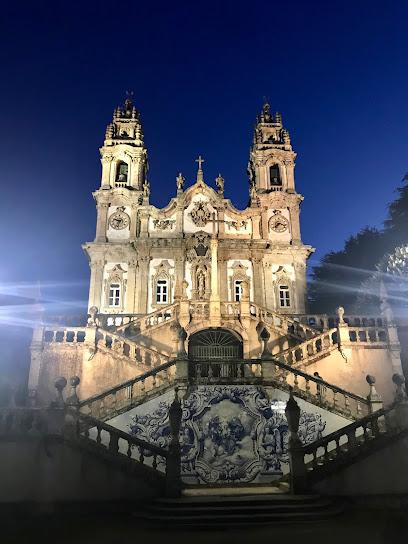
Viseu Cathedral
Discover the spiritual heart of Portugal at Viseu Cathedral, where history and art converge in a stunning architectural masterpiece.

Lamego Cathedral
Discover the stunning Baroque beauty and rich history of Lamego Cathedral, a must-visit cultural gem in the heart of Portugal.

Castelo de Lamego
Explore Castelo de Lamego: A breathtaking medieval fortress in Portugal's Douro Valley, offering stunning views and rich historical significance.

Scenic spot Frecha da Mizarela
Experience the breathtaking natural beauty of Frecha da Mizarela in Arouca, Portugal, a must-visit scenic spot for nature enthusiasts and photographers.
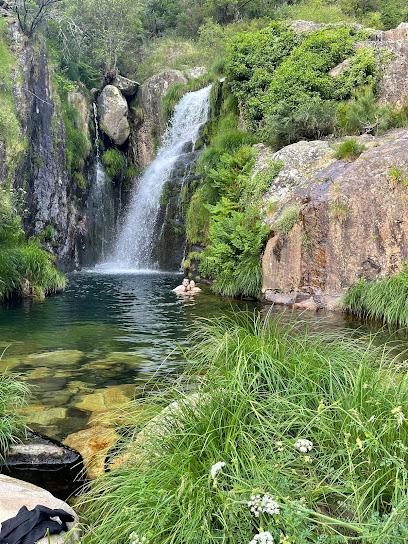
Panorâmica do Detrelo da Malhada
Discover the breathtaking views and natural beauty at Panorâmica do Detrelo da Malhada, a must-see scenic spot in Moldes, Portugal.

Parque de Lazer de Pias
Explore the lush beauty of Parque de Lazer de Pias, a serene park in Cinfães, Portugal, perfect for relaxation and family fun in nature.

Museu da Broa
Explore the rich cultural heritage of bread-making at Museu da Broa in Capela, a captivating museum that celebrates local traditions and artisan craftsmanship.

Museu Nacional Grão Vasco
Discover the artistic legacy of Portugal at the Museu Nacional Grão Vasco in Viseu, home to exquisite Renaissance artworks and rich history.

Castro Monte Mozinho
Explore the ancient wonders of Castro Monte Mozinho, a historical landmark showcasing the rich cultural heritage of Portugal.
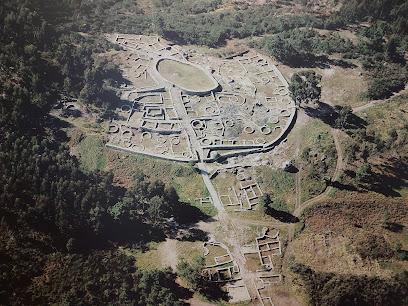
Cathedral of Vila Real
Discover the breathtaking Cathedral of Vila Real, a stunning Baroque masterpiece and a living symbol of Portugal's rich religious and cultural heritage.

Quinta do Vallado
Experience luxury and nature at Quinta do Vallado, a historic winery and hotel in the heart of Portugal's stunning Douro Valley, renowned for exquisite wines and breathtaking views.
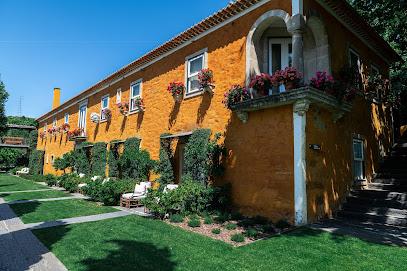
Baloiço do Bestança
Experience the breathtaking views and tranquil beauty of Baloiço do Bestança, an enchanting swing viewpoint in Cinfães, Portugal.

Pedras Broas do Junqueiro
Explore the breathtaking geological formations of Pedras Broas do Junqueiro in Arouca, Portugal, a paradise for nature lovers and adventure seekers alike.
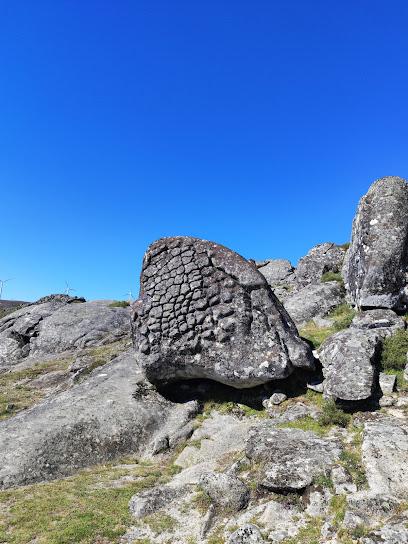
Miradouro de Teixeirô
Experience stunning views of the Douro River at Miradouro de Teixeirô, a must-visit scenic viewpoint in Cinfães, Portugal.

Essential places to dine
Restaurante Solar do Montemuro
Discover authentic Portuguese cuisine at Restaurante Solar do Montemuro in Cinfães - where tradition meets taste.
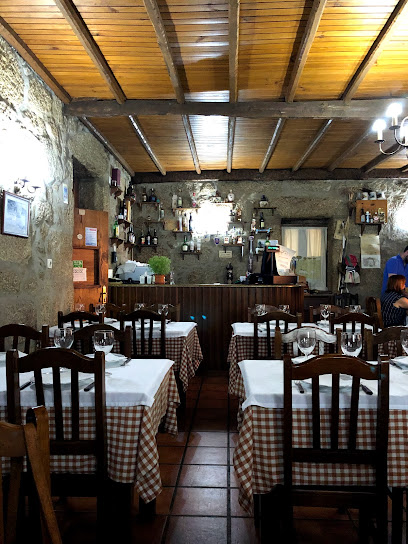
Sabores De Montemuro
Discover Sabores De Montemuro in Cinfães - A culinary destination offering exquisite steaks and traditional Portuguese cuisine in a warm atmosphere.

Estrela da Serra
Discover authentic Portuguese cuisine at Estrela da Serra in Ester – where tradition meets flavor in a cozy setting.

Markets, malls and hidden boutiques
Capuchinhas
Explore unique local fashion at Capuchinhas in Gosende, where trendy styles meet authentic Portuguese charm.

Planeta D Castro Daire
Explore a vibrant selection of high-quality sportswear at Planeta D in Castro Daire, perfect for all your athletic adventures.

PTN Store - Castro Daire
Explore unique local fashion at PTN Store in Castro Daire, a charming clothing destination offering a blend of contemporary and traditional styles.

Casa Pipoca - Moda Infantil e Juvenil
Explore Casa Pipoca, the premier children's clothing store in Castro Daire, offering stylish and comfortable outfits for your little ones.

Fatima's Modas
Explore unique fashion at Fatima's Modas in Castro Daire, combining local charm with contemporary styles for an unforgettable shopping experience.

Morais Fashion
Discover unique styles at Morais Fashion, a charming clothing store in Castro Daire offering local and contemporary fashion for every occasion.

Imagem
Discover unique fashion pieces at Imagem, a charming clothing store in Castro Daire blending contemporary style with local flair.

Édensaúde
Discover unique fragrances and artisanal perfumes at Édensaúde, a charming perfume store in the heart of Castro Daire, Portugal.

Papelaria Diverlippa
Discover your creative side at Papelaria Diverlippa, Castro Daire's premier craft store, offering an array of supplies and expert advice.

loja chinese de weng
Explore Loja Chinese de Weng, a charming home goods store in Castro Daire, offering unique items that blend tradition and modern design.

Loja Sede: Lourenços Moda
Explore stylish apparel and local designs at Lourenços Moda in Castro Daire, a premier clothing store that captures the essence of Portuguese fashion.

Céu Aberto - Decoração De Interiores, Lda
Discover the artistic blend of contemporary and traditional design at Céu Aberto – your ultimate destination for exquisite home décor in Castro Daire.

Manuel Alexandre Da Silva Camelo
Discover the charm of Portuguese fashion at Manuel Alexandre Da Silva Camelo, where unique styles meet local craftsmanship and vibrant culture.
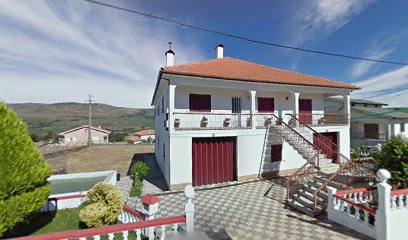
Euroveste
Discover stylish collections and personalized service at Euroveste, a premier clothing store in the heart of Castro Daire, Portugal.

Maisonline.pt
Discover joy in every aisle at Maisonline.pt, Castro Daire's charming toy store filled with unique gifts and delightful treasures for all ages.

Essential bars & hidden hideouts
Recanto dos Carvalhos
Experience authentic Portuguese flavors at Recanto dos Carvalhos, a cozy restaurant in Viseu, known for its exquisite dishes and local wines.

Encosta do Moinho
Experience the authentic flavors of Portugal in the picturesque Encosta do Moinho restaurant, a perfect blend of tradition and stunning views.

Bem Estar
Discover the delightful culinary experience at Bem Estar, where traditional Portuguese flavors meet modern gastronomy in a cozy atmosphere.

Restaurante Tendais
Discover the authentic flavors of Portugal at Restaurante Tendais, where delicious meals meet an inviting atmosphere in Fermentãos.

Restaurante Solar do Montemuro
Discover authentic Portuguese cuisine at Restaurante Solar do Montemuro, blending tradition and flavor in the heart of Cinfães.

Sabores De Montemuro
Experience the rich flavors of Cinfães at Sabores De Montemuro, a premier steakhouse serving delicious local cuisine in a warm and inviting atmosphere.
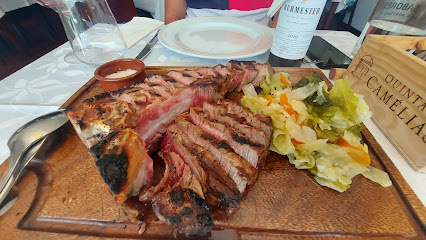
Restaurante Mira Serra
Experience authentic Portuguese flavors at Restaurante Mira Serra, where delightful dishes and a cozy atmosphere await every traveler.

Tony's Bar
Experience the local charm of Tarouca at Tony's Bar, where delightful drinks and a warm atmosphere await every visitor.

BARLU
Experience the vibrant atmosphere of Barlu, a cocktail bar in Resende, serving creative cocktails in an inviting setting.

Bar Cais Porto Antigo
Experience the lively charm of Bar Cais Porto Antigo, a must-visit waterfront bar in Porto offering local drinks and stunning views.

Caldas Bar
Experience the charm of Caldas Bar in Resende, where local flavors and a vibrant atmosphere await every visitor.

Estrela da Serra
Discover Estrela da Serra in Ester, where authentic Portuguese flavors come alive in a cozy setting, perfect for every traveler.
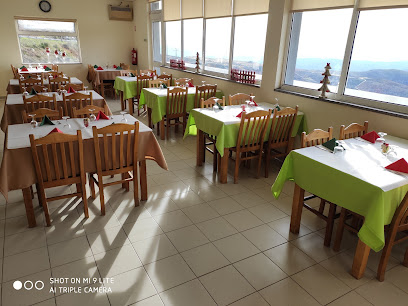
Bar Juiz De Barrelas
Discover the lively ambiance and local flavors at Bar Juiz De Barrelas in Vila Nova de Paiva, a perfect spot for drinks and socializing.

Alkunhas 74 Bar
Experience the charm of Castro Daire at Alkunhas 74 Bar, where local culture meets a vibrant nightlife in a cozy setting.
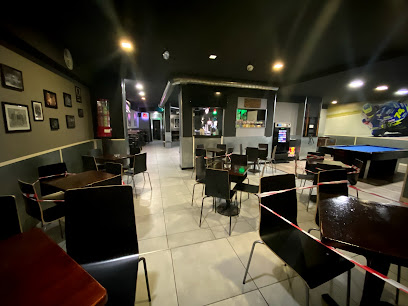
Boémio Bar/Restaurante
Experience the vibrant atmosphere and delectable tapas at Boémio Bar/Restaurante, a must-visit spot for travelers in Portugal.

Local Phrases about Serra do Montemuro
-
- HelloOlá
[oh-lah] - GoodbyeAdeus
[ah-deh-oosh] - YesSim
[seem] - NoNão
[now] - Please/You're welcomePor favor/De nada
[por fah-vohr/deh nah-dah] - Thank youObrigado
[oh-bree-gah-doo] - Excuse me/SorryCom licença/Desculpe
[kohm lee-sen-sah/deh-skool-peh] - How are you?Como estás?
[koh-moh ehs-tahsh] - Fine. And you?Estou bem. E tu?
[ehs-toh-oo behn. eh too] - Do you speak English?Falas inglês?
[fah-lahsh een-glehs] - I don't understandNão entendo
[now ehn-tehn-doo]
- HelloOlá
-
- I'd like to see the menu, pleaseGostaria de ver a ementa, por favor
[goh-stah-ree-ah deh vehr ah eh-mehntah, por fah-vohr] - I don't eat meatNão como carne
[now koh-moo kahr-neh] - Cheers!Saúde!
[sow-deh] - I would like to pay, pleaseQueria pagar, por favor
[keh-ree-ah pah-gahr, por fah-vohr]
- I'd like to see the menu, pleaseGostaria de ver a ementa, por favor
-
- Help!Ajuda!
[ah-joo-dah] - Go away!Vai embora!
[vah-ee ehm-boh-rah] - Call the Police!Chama a polícia!
[shah-mah ah poh-lee-see-ah] - Call a doctor!Chama um médico!
[shah-mah oom meh-dee-koo] - I'm lostEstou perdido(a)
[ehs-toh pehr-dee-doo(dah)] - I'm illEstou doente
[ehs-toh doo-ehn-teh]
- Help!Ajuda!
-
- I'd like to buy...Gostaria de comprar...
[goh-stah-ree-ah deh kohm-prahr] - I'm just lookingEstou só a ver
[ehs-toh soh ah vehr] - How much is it?Quanto custa?
[kwan-toh koosh-tah] - That's too expensiveIsso é muito caro
[ee-soo eh moo-ee-toh kah-roo] - Can you lower the price?Pode baixar o preço?
[poh-deh bahy-shahr oo preh-soo]
- I'd like to buy...Gostaria de comprar...
-
- What time is it?Que horas são?
[keh oh-rahsh sah-ooh?] - It's one o'clockÉ uma hora
[eh oo-mah oh-rah] - Half past (10)Meio-dia
[may-oo dee-ah] - MorningManhã
[mah-nyah] - AfternoonTarde
[tahr-deh] - EveningNoite
[noy-teh] - YesterdayOntem
[ohn-tehm] - TodayHoje
[oh-zheh] - TomorrowAmanhã
[ah-mahn-yah] - 1Um
[oom] - 2Dois
[doysh] - 3Três
[traysh] - 4Quatro
[kwah-troo] - 5Cinco
[seen-koo] - 6Seis
[saysh] - 7Sete
[seh-teh] - 8Oito
[oy-toh] - 9Nove
[noh-veh] - 10Dez
[dehsh]
- What time is it?Que horas são?
-
- Where's a/the...?Onde fica o/a...?
[ohn-deh fee-kah oo/ah] - What's the address?Qual é a morada?
[kahl eh ah moh-rah-dah] - Can you show me (on the map)?Pode mostrar-me (no mapa)?
[poh-deh moh-shtr-meh (noo mah-pah)] - When's the next (bus)?Quando é o próximo (autocarro)?
[kwahn-doo eh oo proh-ksee-moo (ow-toh-kah-roo)] - A ticket (to ....)Um bilhete (para ....)
[oom beel-yeh-teh (pah-rah)]
- Where's a/the...?Onde fica o/a...?
History of Serra do Montemuro
-
Serra do Montemuro has been inhabited since prehistoric times, with archaeological findings such as dolmens and menhirs scattered across the landscape. These megalithic structures suggest that early civilizations held the region in significant regard, possibly for ritualistic and ceremonial purposes.
-
During the Roman era, Serra do Montemuro was part of the extensive Roman road network connecting various settlements in the Iberian Peninsula. Remnants of Roman milestones and roads can still be observed, indicating the strategic importance of the area in ancient trade and travel.
-
In the Middle Ages, Serra do Montemuro was dotted with fortifications and watchtowers as part of the defense system against invasions. The Castle of Lamego, situated nearby, served as a crucial stronghold for the protection of the region. Many of these medieval structures have fallen into ruins but continue to symbolize the region's turbulent past.
-
The region is home to various chapels and churches that reflect its deep-rooted religious traditions. The Sanctuary of Nossa Senhora da Guia, located in the heart of the mountains, is a pilgrimage site and architectural gem that attracts numerous visitors every year. These religious sites often blend Gothic, Baroque, and Romanesque styles, showcasing the area's diverse architectural heritage.
-
Serra do Montemuro is known for its picturesque villages, such as Gralheira and Mezio, where traditional stone houses and narrow cobblestone streets paint a vivid picture of rural Portuguese life. These villages have preserved their cultural heritage, with local festivals, handicrafts, and agricultural practices offering a glimpse into the region's enduring traditions.
-
The region hosts numerous cultural festivals that celebrate its rich folklore and traditions. One of the most notable is the Festa da Senhora da Guia, a religious festival that includes processions, music, and dance. These events are vital in preserving the oral histories and cultural practices that have been passed down through generations.
-
In recent years, efforts have been made to balance modern development with the conservation of Serra do Montemuro's natural and cultural heritage. Initiatives such as eco-tourism and heritage trails have been introduced to promote sustainable tourism while protecting the area's unique landscape and historical sites.
Serra do Montemuro Essentials
-
Serra do Montemuro is located in northern Portugal, in the Viseu district. The nearest international airport is Francisco Sá Carneiro Airport (OPO) in Porto, approximately 100 kilometers away. From Porto, you can rent a car or take a bus to reach the Serra do Montemuro area. The journey by car typically takes around 1.5 to 2 hours. Alternatively, you can take a train to the nearby town of Lamego and then a local bus or taxi to reach Serra do Montemuro.
-
While in Serra do Montemuro, renting a car is the most convenient way to explore the area, as public transportation options are limited. Local taxis are available but can be costly for longer trips. For those who prefer public transport, regional buses connect the nearby towns and villages, but schedules can be infrequent. Walking and hiking are popular ways to explore the natural scenery and small villages within the region.
-
The official currency in Portugal is the Euro (EUR). Major credit and debit cards are widely accepted in hotels, restaurants, and shops. However, it is advisable to carry some cash, especially in smaller villages and rural areas where card payment facilities might not be available. ATMs are available in the nearby towns like Lamego and Castro Daire.
-
Serra do Montemuro is generally a safe destination for tourists. Crime rates are low, but standard precautions should be taken. Avoid leaving valuables in plain sight in your car and be cautious in isolated areas, especially at night. There are no specific high-crime areas targeting tourists, but staying vigilant and aware of your surroundings is always advisable.
-
In case of emergency, dial 112 for immediate assistance. For medical emergencies, the nearest hospitals are located in Lamego and Viseu. Pharmacies are available in the nearby towns for minor health issues. It is recommended to have travel insurance that covers medical emergencies. The local police station can be found in Castro Daire.
-
Fashion: Do dress comfortably for outdoor activities, but also pack some modest clothing for visiting religious sites. Avoid wearing overly revealing clothing. Religion: Do respect local customs and traditions. When visiting churches, dress modestly and behave respectfully. Public Transport: Do be polite and offer your seat to elderly passengers. Don’t eat or drink on public transportation. Greetings: Do greet people with a friendly 'Bom Dia' (Good Morning) or 'Boa Tarde' (Good Afternoon). A firm handshake is common. Eating & Drinking: Do try local foods and wines, and accept hospitality graciously. Don’t rush through meals; dining is a leisurely and social activity.
-
To experience Serra do Montemuro like a local, visit the weekly markets in nearby towns where you can purchase fresh produce and artisanal goods. Engage with the locals, who are often friendly and willing to share insights about their culture and traditions. Don’t miss the opportunity to hike the numerous trails in the region, which offer stunning views and a chance to see the traditional schist villages. Also, try the local cuisine, particularly the regional cheeses and wines.
Nearby Cities to Serra do Montemuro
-
Things To Do in Vila Real
-
Things To Do in Porto
-
Things To Do in Guimarães
-
Things To Do in Aveiro
-
Things To Do in Braga
-
Things To Do in Coimbra
-
Things To Do in Chaves
-
Things To Do in Ponte de Lima
-
Things To Do in Viana do Castelo
-
Things To Do in Bragança
-
Things To Do in Tomar
-
Things To Do in Viseu
-
Things To Do in Salamanca
-
Things To Do in Caldas da Rainha
-
Things To Do in Santiago de Compostela










